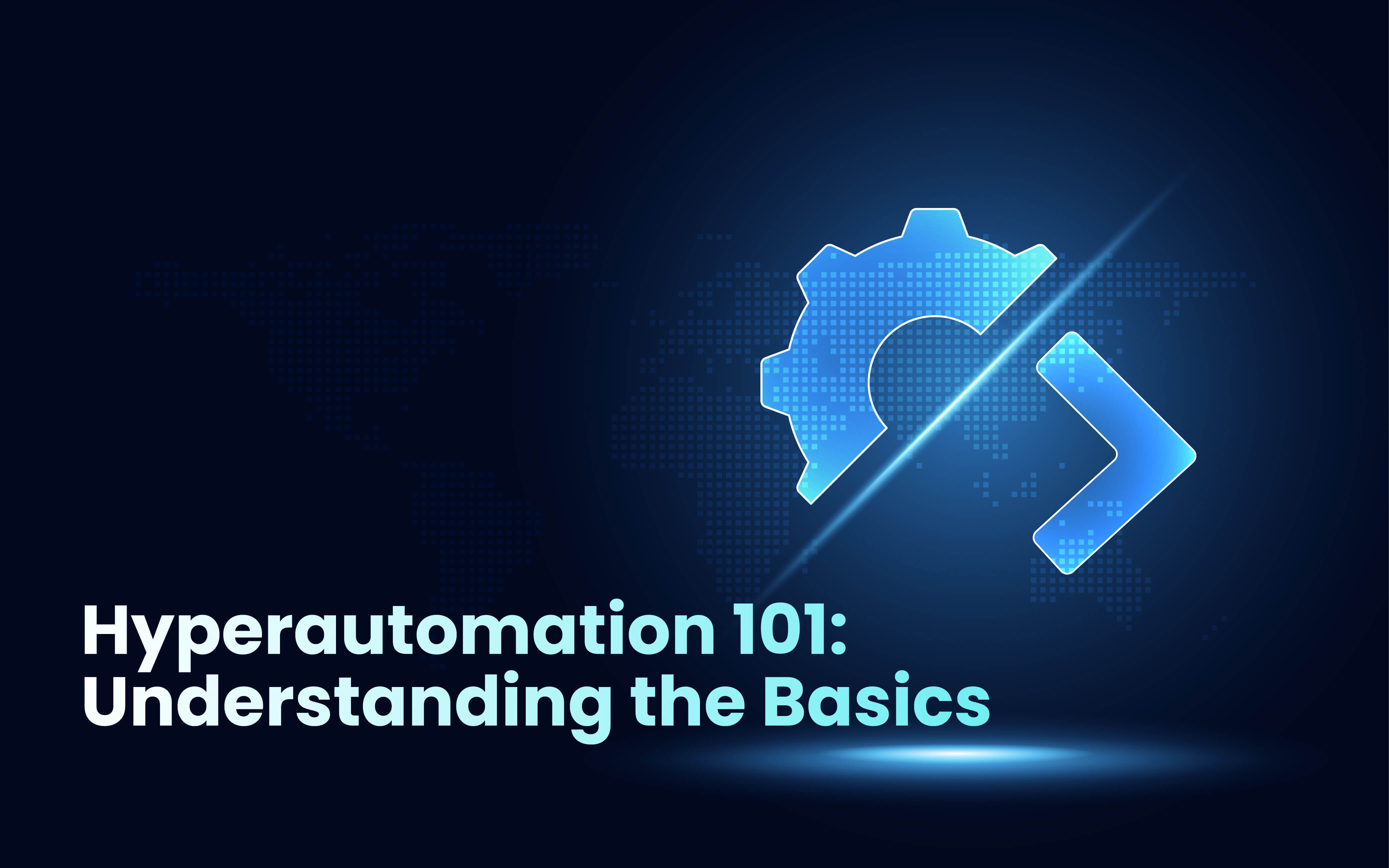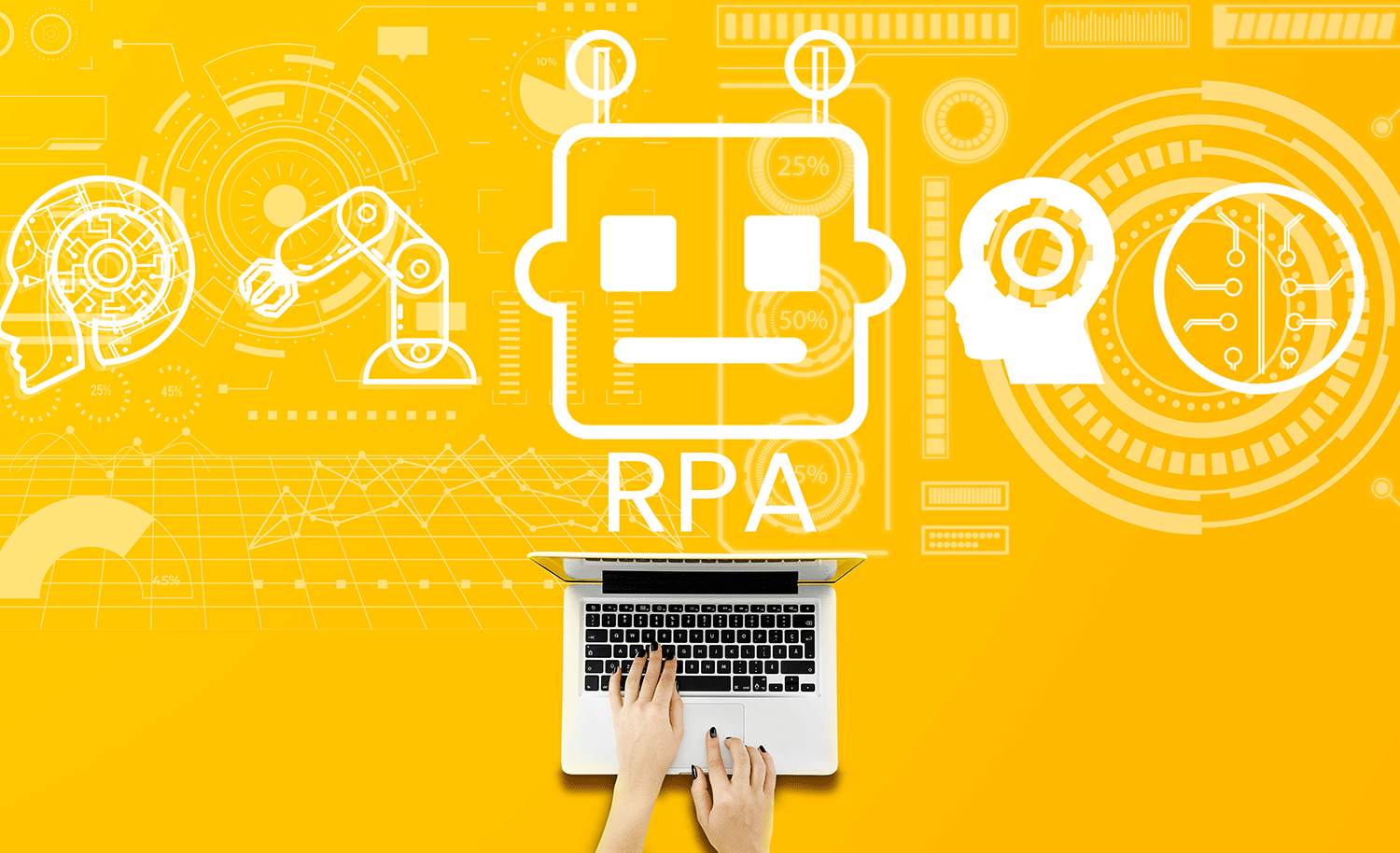Blogs
To know about all things Digitisation and Innovation read our blogs here.
Automation
Hyperautomation 101: Understanding the Basics
SID Global Solutions
25 April 2023

Hyperautomation is a term that has been gaining a lot of attention in recent years, and for good reason. It refers to the integration of multiple technologies, including artificial intelligence, machine learning, and robotic process automation, to automate and optimize business processes. This article will provide a comprehensive guide to understanding the basics of hyperautomation, including what it is, why it is important, and how to get started.
What is Hyperautomation?
Hyperautomation is a holistic approach to automating business processes. It involves the use of advanced technologies, such as artificial intelligence, machine learning, and robotic process automation, to automate a wide range of tasks, from simple and repetitive tasks to complex and decision-based tasks. Hyperautomation is designed to improve business efficiency, accuracy, and agility, while reducing costs and increasing customer satisfaction.
Also Read: Why Agile Isn’t Enough: Exploring Modern Software Development Methodologies
Why is Hyperautomation Important?
Hyperautomation is important for several reasons. First, it allows businesses to automate more processes and make better decisions in real-time, which can improve efficiency and accuracy. Second, it can help businesses to adapt to changing market conditions and customer needs more quickly, making them more agile and competitive. Finally, hyperautomation can help businesses to reduce costs by eliminating manual and repetitive tasks and improving process efficiency.
Automation vs. hyperautomation
Automation refers to the use of technology to perform repetitive and routine tasks that were previously performed by humans. The goal of automation is to increase efficiency and productivity by reducing the time and effort required to complete these tasks.
Hyperautomation, on the other hand, goes beyond traditional automation by combining technologies such as artificial intelligence (AI), machine learning (ML), and robotic process automation (RPA) to automate complex and interconnected business processes. Hyperautomation can also incorporate other advanced technologies such as natural language processing (NLP), optical character recognition (OCR), and intelligent automation tools.
The key difference between automation and hyperautomation is that while automation focuses on automating a single task or process, hyperautomation aims to automate entire end-to-end business processes. Hyperautomation is also more flexible and adaptable than traditional automation, as it can learn from data and improve over time. Automation and hyperautomation both aim to improve efficiency and productivity through the use of technology, but hyperautomation takes it to the next level by incorporating more advanced technologies and automating entire business processes.
Also Read: The API-First Approach: Why it Matters for Modern Software Development
Key Steps for Getting Started with Hyperautomation:
If you are considering hyperautomation for your business, here are some key steps to get started:
- Identify the business processes that are most suitable for automation: The first step in getting started with hyperautomation is to identify the business processes that are most suitable for automation. This involves assessing your current processes and identifying those that are manual, repetitive, and rule-based. These are the processes that are most likely to benefit from automation and can free up your workforce to focus on more strategic and creative tasks.
- Assess the quality of your data and identify any gaps that need to be addressed: Hyperautomation relies on high-quality data to make accurate and timely decisions. Before implementing hyperautomation, it is important to assess the quality of your data and identify any gaps that need to be addressed. This may involve cleaning and consolidating data from multiple sources, or implementing data governance policies to ensure data quality and consistency.
- Determine the level of investment required and develop a business case for hyperautomation: Hyperautomation can require a significant investment in terms of time, resources, and technology. Before implementing hyperautomation, it is important to determine the level of investment required and develop a business case that justifies the investment. This may involve estimating the costs and benefits of hyperautomation, including improved efficiency, accuracy, and cost savings.
- Develop a roadmap for implementation, including a timeline, milestones, and key performance indicators: Once you have identified the processes to automate and developed a business case for hyperautomation, it is important to develop a roadmap for implementation. This roadmap should include a timeline, milestones, and key performance indicators to measure progress and ensure that the implementation stays on track. It should also include a plan for training and upskilling your workforce to adapt to the changes brought about by hyperautomation.
- Establish a governance framework to manage risks and ensure compliance with relevant regulations: Hyperautomation can introduce new risks and compliance requirements, such as data privacy and security concerns. It is important to establish a governance framework to manage these risks and ensure compliance with relevant regulations. This may involve developing policies and procedures for data handling, security, and privacy, as well as implementing monitoring and reporting mechanisms to ensure compliance.
- Train and upskill your workforce to adapt to the changes brought about by hyperautomation: Hyperautomation can bring about significant changes to the way that your workforce operates. It is important to train and upskill your workforce to adapt to these changes and take advantage of the new opportunities presented by hyperautomation. This may involve providing training and support for new technologies and processes , as well as providing opportunities for reskilling and upskilling to ensure that your workforce has the skills needed to succeed in a hyperautomated environment.
- Monitor and optimize your hyperautomation processes to ensure continued success: Once you have implemented hyperautomation, it is important to monitor and optimize your processes to ensure continued success. This may involve monitoring key performance indicators to identify areas for improvement, as well as continually reviewing and refining your hyperautomation processes to ensure that they remain efficient, effective, and aligned with your business goals.
Also Read: How Monitoring-as-Code Improves DevOps Collaboration and Communication?
Benefits of Hyperautomation
Hyperautomation offers a range of benefits for businesses, including:
- Improved Efficiency: Hyperautomation can automate a wide range of tasks, freeing up your workforce to focus on more strategic and creative tasks. This can improve efficiency and reduce the time and resources needed to complete tasks.
- Increased Accuracy: Hyperautomation can reduce errors and improve accuracy by automating repetitive and rule-based tasks. This can reduce the risk of human error and improve the quality of your data and decision-making.
- Greater Agility: Hyperautomation can help businesses to adapt to changing market conditions and customer needs more quickly. This can make businesses more agile and responsive to new opportunities and challenges.
- Cost Savings: Hyperautomation can reduce costs by eliminating manual and repetitive tasks, reducing the need for manual labor, and improving process efficiency.
- Improved Customer Satisfaction: Hyperautomation can improve customer satisfaction by reducing errors and delays, improving the speed and quality of service, and enabling businesses to provide more personalized and responsive service.
Challenges of Hyperautomation
While hyperautomation offers many benefits, it is not without its challenges. Some of the key challenges of hyperautomation include:
- Technology Integration: Hyperautomation involves the integration of multiple technologies, which can be complex and challenging to implement and maintain.
- Data Quality: Hyperautomation relies on high-quality data to make accurate and timely decisions. Ensuring data quality can be a significant challenge, particularly when working with data from multiple sources.
- Workforce Adaptation: Hyperautomation can bring about significant changes to the way that your workforce operates. Ensuring that your workforce has the skills and support needed to adapt to these changes can be a significant challenge.
- Governance and Compliance: Hyperautomation can introduce new risks and compliance requirements, such as data privacy and security concerns. Ensuring that you have a robust governance framework in place to manage these risks and ensure compliance can be a significant challenge.
Also Read: DataOps and Agile: A Winning Combination for Data Management
Hyperautomation Use Cases
Hyperautomation can be applied to a wide range of use cases across different industries and business functions. Here are some examples of hyperautomation use cases:
- Finance and Accounting: Hyperautomation can be used to automate accounts payable and accounts receivable processes, reducing manual labor and improving accuracy.
- Human Resources: Hyperautomation can be used to automate recruitment processes, such as resume screening and scheduling interviews, reducing the time and effort required to hire new employees.
- Customer Service: Hyperautomation can be used to automate customer service processes, such as chatbots and voice assistants, providing faster and more efficient support to customers.
- Supply Chain and Logistics: Hyperautomation can be used to automate inventory management and order processing, reducing manual labor and improving order accuracy.
- Manufacturing: Hyperautomation can be used to automate quality control processes, such as defect detection and analysis, improving product quality and reducing waste.
- Healthcare: Hyperautomation can be used to automate patient scheduling and appointment reminders, reducing manual labor and improving patient experience.
- Legal: Hyperautomation can be used to automate document review and analysis, reducing the time and effort required for legal research and due diligence.
Hyperautomation can be applied to almost any business process that involves manual labor, repetitive tasks, and complex workflows. By automating these processes, organizations can reduce costs, improve efficiency, and free up employees to focus on higher value tasks.
Conclusion
Hyperautomation is a powerful tool for businesses looking to improve efficiency, accuracy, agility, and customer satisfaction, while reducing costs. By integrating advanced technologies such as artificial intelligence, machine learning, and robotic process automation, businesses can automate a wide range of tasks and improve their decision-making capabilities. However, implementing hyperautomation requires careful planning and a robust governance framework to manage risks and ensure compliance with relevant regulations. By following the key steps outlined in this guide, businesses can get started with hyperautomation and realize the benefits it has to offer.









